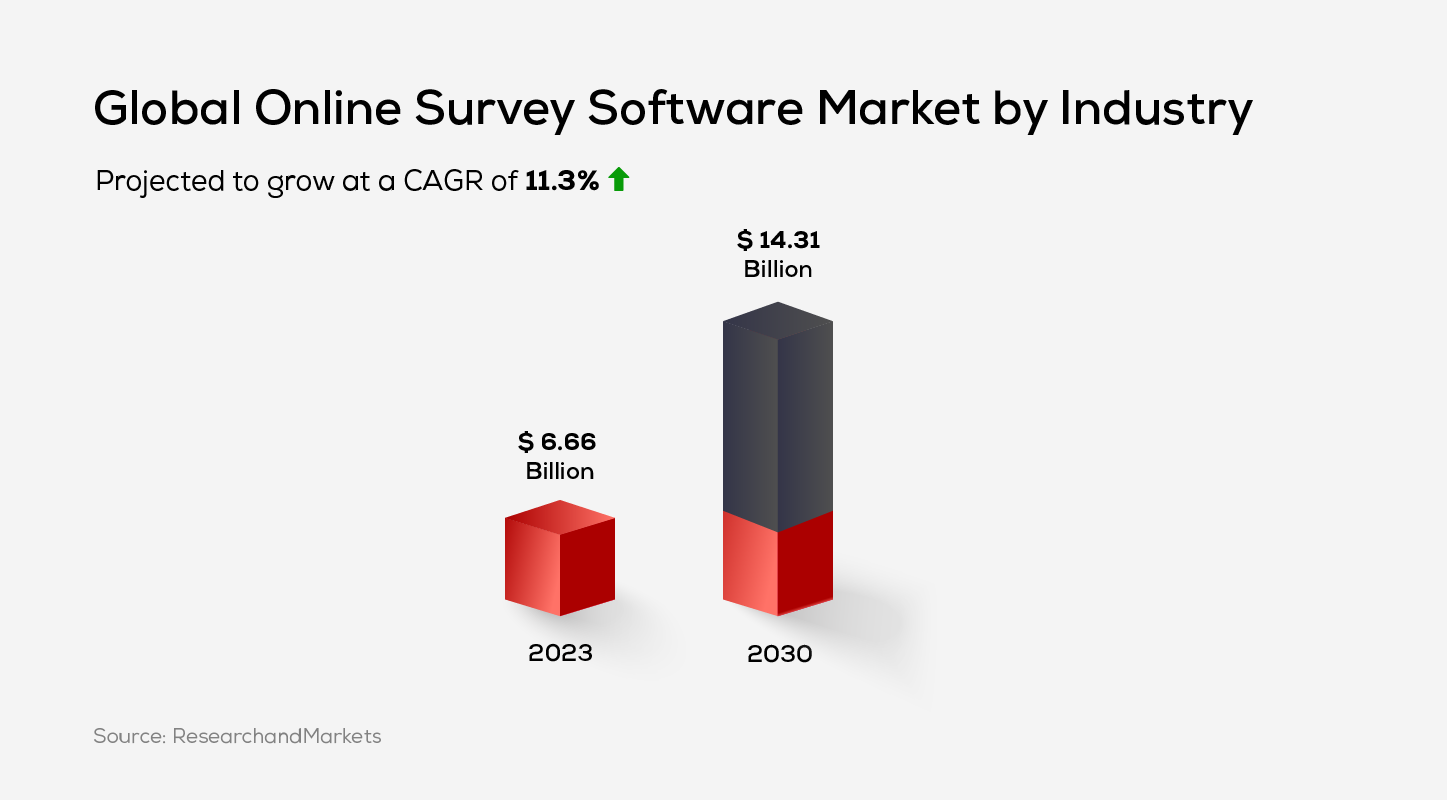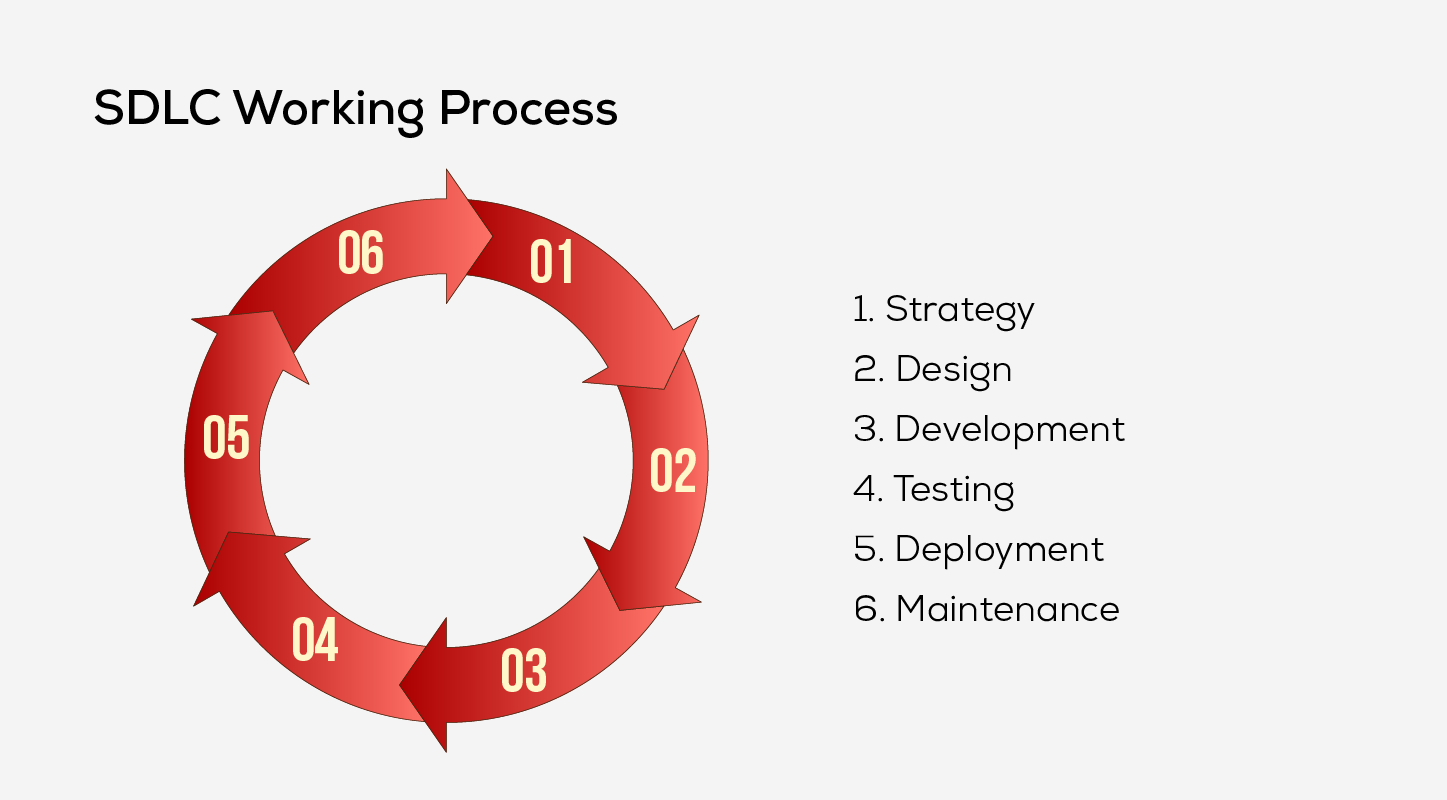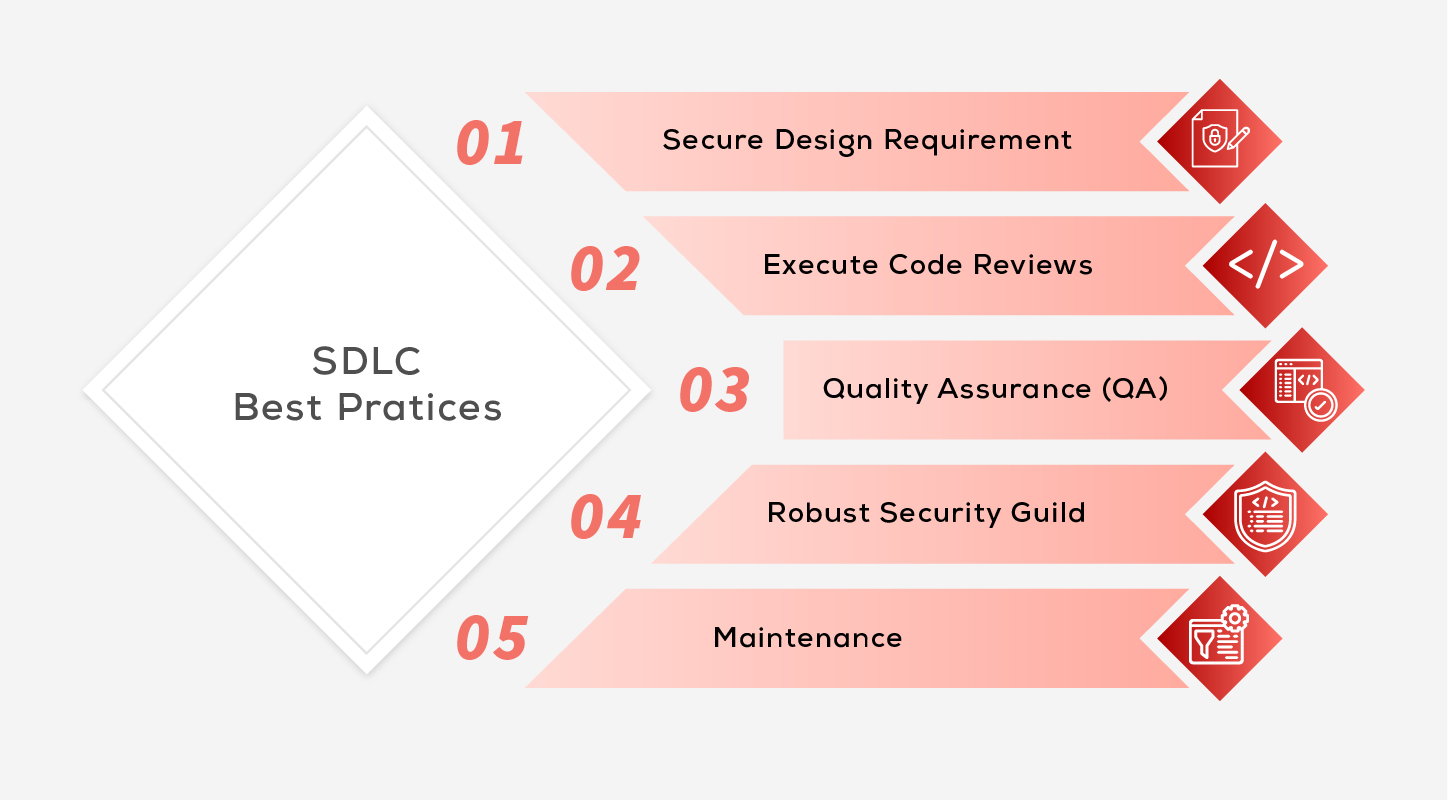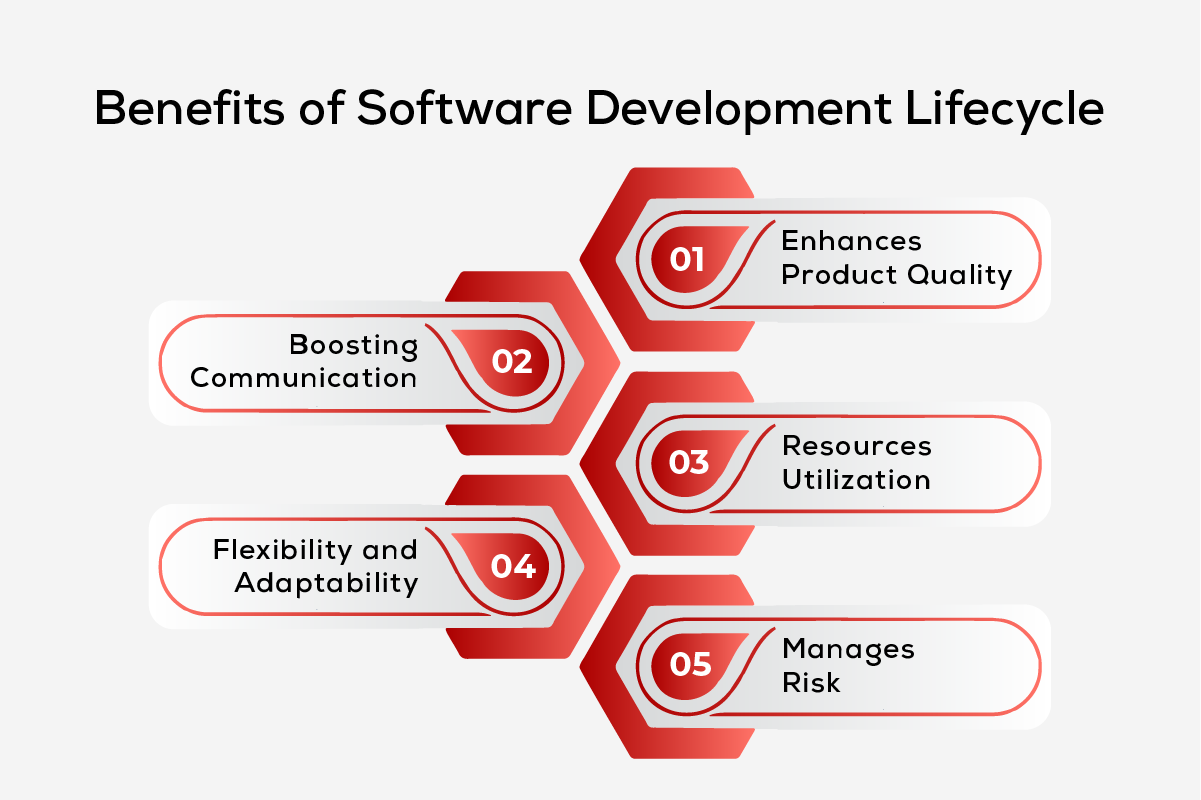Quick Summary: Software Development Life Cycle produces high-quality software and creates an environment where businesses can collaborate. This blog discusses the Software Development Life ycle’s working process,its importance, best practices, methodologies, benefits, challenges and use cases.
To develop quality software, a structured process for managing time is essential. The Software Development Life Cycle (SDLC) offers this framework, facilitating efficient planning, creation, testing, and deployment. SDLC is suitable for both large-scale and small-scale applications. According to the survey conducted by Research and Markets, the Online Software Market was estimated at USD 6.06 billion in 2022 and is projected to grow to USD 14.31 billion at a CAGR of 11.33% by 2030.

With a clear view of the software market, let’s now delve into the details of Software Development Life Cycle.
What is the Software Development Life Cycle (SDLC)?
The Software Development Life Cycle (SDLC) stands as a keystone for developers, enabling them to plan, deploy, test, and release software efficiently, while aiming for ideal quality and cost-effectiveness. It helps meet customer expectations and demands within the overall budget by tracking and documenting each phase of the process.
By outlining the project scope and key activities, team members get a clear understanding of their roles, leading to a more effective development process. Additionally, SDLC identifies risks throughout the development cycle and ensures a smoother project flow.
SDLC Working Process
The SDLC focuses on planning, standardization, and continuous improvement to streamline development, leading to cost savings, quality and faster delivery. By following a plan and assessing current systems, it progresses through analysis, planning, design, development, testing and deployment stages.

1. Strategy
The initial stage of the SDLC typically involves identifying the objectives, system goals and challenges. A proper understanding of the target audience is crucial for effective product development and marketing. This is followed by competitor research, which identifies missing features and guides developers to make informed decisions and enhance customer satisfaction.
2. Design
The design phase focuses on the working process of the system through software design, ensuring it aligns with both technical and functional specifications. Here, the development team determines the software’s functions and users interactions and selects platforms such as Android, iOS, or Windows.
3. Development
In the third stage of SDLC, teams select the technologies, libraries, frameworks and integrations based on existing technologies to build the system.
4. Testing
During the testing phase, developers detect and fix bugs, carefully testing each component to ensure a smooth workflow and reduce the number of issues.
5. Deployment
The deployment phase ensures that the system update is accessible to customers, including installation, deployment, testing and performance monitoring. Continuous Integration and Continuous Deployment (CI/CD) facilitate ongoing app delivery and updates throughout the lifecycle.
6. Maintenance
In the final phase, the team identifies and fixes bugs. To stay ahead in the ever-evolving market landscape, it is important to keep refining the software and adding new features.
Importance of SDLC
- Accelerates development speed
- Improves client relations
- Aids in planning, evaluation and organization
- Reduces project risks
- Simplifies project tracking and control
SDLC Best Practices
The best practices of the Software Development Lifecycle are as follows:

1. Secure Design Requirement
Standardization is a key practice in protecting the SDLC and promoting continuous improvement. Regular implementation of security best practices helps standardize new code development. Using tools with built-in SDLC functionalities ensures developers understand each stage of the process.
Here are some key test plans to consider:
- Setting up a testing platform
- Identifying resources to be used
- Conducting application security testing
- Estimating the testing phase schedule
2. Execute Code Reviews
Agile teams often work differently, promoting security within the SDLC and helping stakeholders identify issues early. A code review checklist assists in evaluating code for readability, bugs, test coverage, and reusability. This process helps reviewers pinpoint areas needing correction before final implementation.
3. Quality Assurance (QA)
Quality Assurance (QA) is vital for identifying system faults and inconsistencies, ensuring high-quality software. Key reasons QA is crucial include:
- Preventing financial losses due to system flaws
- Protecting brand value from damage caused by poor customer experience
- Avoiding declines in user satisfaction and community engagement
QA is essential in the software development projects due to the following reasons. The adoption of secure coding plays an important role in decreasing security risks. Additionally, security tools improve the code quality efficiently. By incorporating best practices and tools for quality measurement, teams get to complete their projects more quickly and attain a smoother development process.
4. Robust Security Guild
Despite the development of many applications, there is a lack of application security experts. Implementing scalable application security programs remains challenging due to both dynamic and static security technologies. To ensure a secure SDLC, regular and early testing is essential.
5. Maintenance
The suggestions and instructions should be communicated beforehand to avoid confusion. This includes clarifying responsibilities for software security, specifying developer requirements, and allowing time to choose an effective software architecture.
Software Development Methodology
The right approach to software development depends on the organization's size and goals. These factors play a crucial role in developing effective software systems. The main objective is to ensure a smooth and efficient software development process.
Are you ready to optimize your workflow? Learn about the Top 10 Software Development Methodologies: How to Choose the Right One
Benefits of Software Development Life Cycle
The Software Development Life Cycle (SDLC) offers streamlined and efficient development. Key benefits include:

1. Enhances Product Quality
The SDLC approach enhances the software products by breaking the process into distinct phases like coding, design and testing, allowing for early defect detection and reduced risk of failures. Further, the product quality can be enhanced through:
- Continuous testing at every stage of development
- Ongoing validation to ensure alignment with expectations
- Iterative development, building software in small increments with each phase subject to validation and testing
2. Boosting Communication
Boosting communication among the stakeholders reduces the chances of failure and drives success in project development. SDLC methodologies like the Waterfall model and Iterative model follow a step-by-step process to ensure collaboration among shareholders, project managers and creators. Also, the SDLC offers additional benefits like creating a collaborative work environment, preventing misinterpretations, and defining clear roles and responsibilities.
3. Efficient Resources Utilization
Effectively utilizing resources is crucial for systematic software development, ensuring that roles, resources, and responsibilities are well-defined. Proper allocation and distribution of tasks contribute to smooth project execution, meeting deadlines, objectives, and budgets. Additionally, efficient resource use leads to cost savings, increased productivity, timely project completion, and enhanced customer satisfaction.
4. Flexibility and Adaptability
One of the remarkable advantages of SDLC is flexibility and adaptability. The chosen SDLC model, such as Agile, or iterative process, allows teams to acknowledge more effectively in the varying market. One of the common SDLC models called the agile model divides the projects into smaller ones called the ‘Sprints’ and makes them adaptable. Therefore, such flexibility offers key benefits like reduced project risks, continuous development and resource allocation.
5. Manages Risk
The SDLC mitigates risks by employing a structured approach, starting with planning and incorporating distinct testing at each phase. Early error detection through documentation, continuous monitoring, risk assessment, and reporting reduces the risk of failure.
Challenges of Software Development Lifecycle
While the SDLC offers many benefits, it also presents several challenges. Let’s explore these challenges.
1. Changing Requirements
One of the common challenges faced by SDLC is the varying requirements in the middle of the project and it can be due to the new insights or changes in the market. These varying changes can be difficult in the case of the waterfall model which follows rigidity.
2. Technical Debt
Technical debt happens while selecting a quick solution without a proper plan. To meet the expectations, developers may experience a rush through the stages which may result in technical debt.
3. Technological Trend
As technology evolves rapidly, staying updated with the latest tools, technologies, and best practices is essential. Adapting to these frequent changes can be challenging, but it's crucial for staying current in the tech world.
Use Cases of Software Development Lifecycle
Let’s delve into some use cases of the software development lifecycle in this section.
1. Microsoft 365
Microsoft 365, which includes Word, Outlook and Excel, follows stages like planning, designing, coding, testing and deployment. This process ensures that the Microsoft Office products undergo thorough testing to meet customer expectations.
2. Google Chrome
Google Chrome, a web browser, undergoes multiple testing stages and follows the SDLC process. This approach ensures users receive robust functionalities and a reliable experience.
3. Slack
Slack, a popular communication tool, uses the Agile SDLC process, incorporating customer feedback and extensive testing. This approach fosters close collaboration between stakeholders and customers, ensuring that features and updates align with customer needs.
Conclusion
Software development teams and organizations adapt the SDLC, based on the chosen methodology and framework for building a product. The SDLC is a process that guides developers in creating high-quality software and offers a structured framework. Organizations can select from various SDLC strategies, such as the Waterfall, Agile, Spiral, and V-shaped models, depending on customer requirements. The SDLC ensures scalability, cost management, and maintainability.
Frequently Asked Questions
1. What is the future of Software Development Lifecycle?
Organizations are embracing faster development lifecycles and automation to keep up with the fast-paced world. DevOps bridges the gap between development and operations, fostering collaboration for a seamless transition. Ongoing innovations and trends are continually reshaping the future of the software development lifecycle.
2. Why is documentation crucial in SDLC?
Clear documentation acts as a roadmap, ensuring consistency and simplifiying the maintenance process. It is crucial for successful software development, fostering collaboration and supporting a smooth development process.
3. How long does a software product lifecycle last?
The duration of the software product depends on the complexity of the product, market demands and the latest tech advancements.
4. What are the key indicators to measure the software development lifecycle?
The success of the product can be measured using key performance indicators (KPI) such as customer satisfaction, time to market and return on investment.
5. How can project management contribute to a successful lifecycle?
Project management is crucial for success, ensuring team alignment, effective resource and timeline management, and delivering results at each stage.







